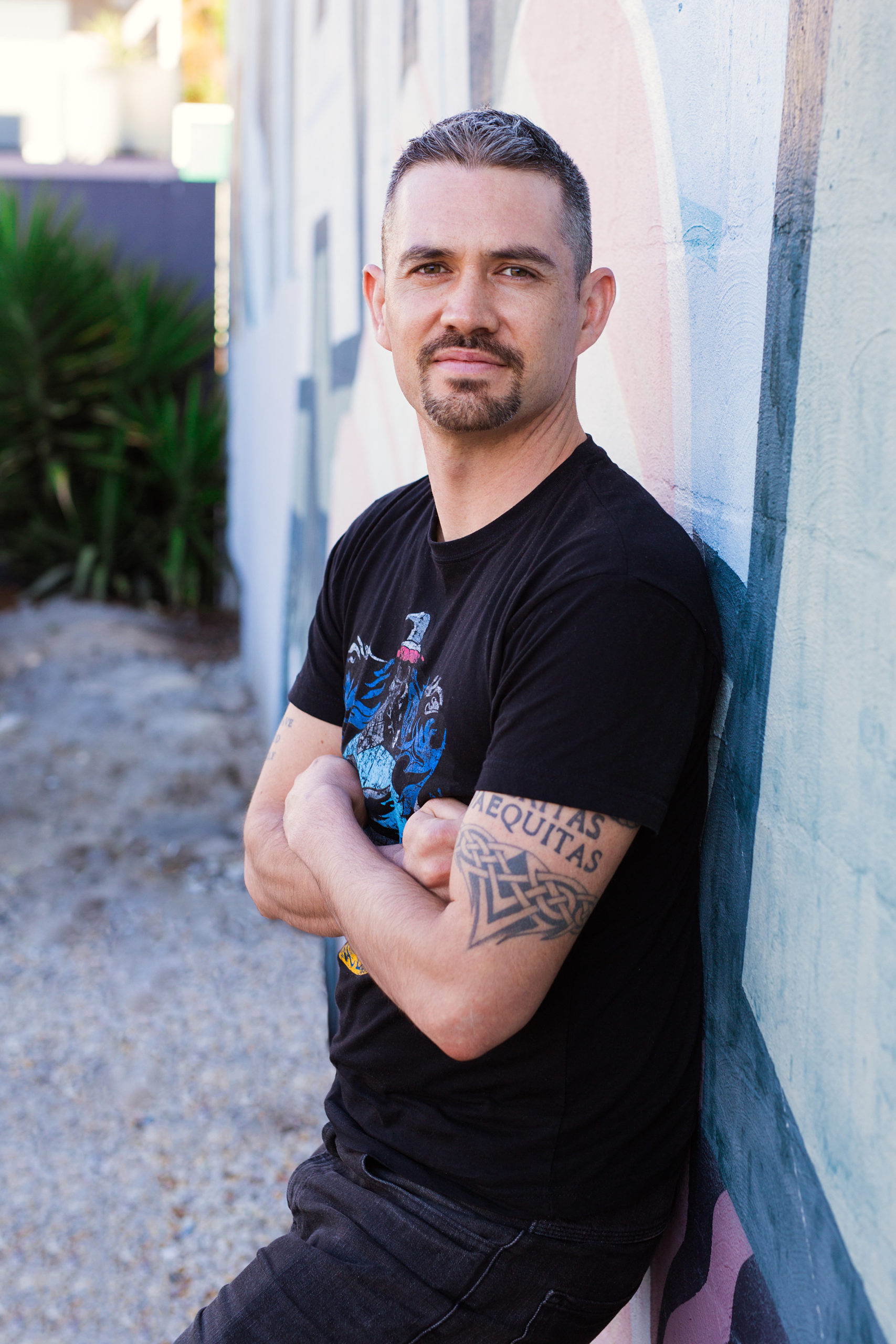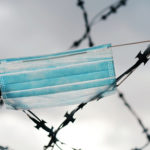Prisoners Lives Are Still at Risk: An Interview With Ex-Inmate Damien Linnane

Victorian Supreme Court Justice Timothy Ginnane ordered on 1 May that the state’s justice department conduct a risk assessment of Port Phillip Prison in relation to COVID-19. The inquiry will include whether adequate cleaning and virus screening measures are taking place.
The order was made in relation to a failed release attempt by Port Phillip inmate Mark Rowson. The 52-year-old explained that he feels like a “sitting duck” on the inside, as he has a chronic heart condition, asthma and hypertension.
The court was told that prison authorities had only started checking the temperature of inmates on 29 April. And it was also heard that overcrowding and a dearth of cleaning make the facility ripe for a virus outbreak.
Justice Ginnane said that the threat of the novel coronavirus is still a very real issue. And while the number of new infection cases is dropping, the fact that Victorians are still locked down in their homes reveals that the novel coronavirus continues to pose a serious risk.
Virus incubators
In acknowledgement that prisons are ripe breeding grounds for the killer virus, the NSW government passed laws allowing for the early release of inmates who are close to the end of their sentences. However, since these measures have been set in place, no one has been released.
In relation to these laws, NSW attorney general Mark Speakman told parliament that the Berejiklian government hopes it will never have to use them, although the “evolution of the pandemic may require” it.
But, while NSW authorities have deemed it unnecessary to release any inmates as yet – and governments are now discussing easing pandemic restrictions within the community – this doesn’t mean that those on the inside have completely escaped the pandemic.
Advocates warn that the disease would spread like wildfire if there was an outbreak in a prison. And with guards coming and going from facilities on a daily basis, any infections within gaols are likely to lead to more COVID-19 cases and fatalities on the outside.
The inside word
Ex-inmate Damien Linnane has been speaking out on behalf of the welfare of prisoners during the COVID-19 pandemic. Having served 10 months in gaol a few years back, the freelance writer is well aware of the risks the NSW prisoner population is now facing.
Linnane spent time in both Glen Innes and Cessnock correctional facilities. Released in September 2016, he was incarcerated over an incident carried out in relation to a crime perpetrated against a family member. The magistrate described his offence as “vigilante justice”.
Sydney Criminal Lawyers spoke to Mr Linnane about some of the less obvious aspects of prison life that put inmates at a heightened risk, how prisoners would be feeling about the threat of the virus and the measures he recommends authorities should be taking in relation to the pandemic.

Firstly, inmates at Cessnock’s Shortland Correctional Centre rioted last Thursday over a restriction on personal visits that has been put in place due to COVID-19.
It was reported that this was not the first such demonstration over pandemic restrictions at NSW correctional facilities. Damien, what are your thoughts on this incident?
I’m not surprised that it happened, but I am surprised that it has taken this long.
Inmates don’t have a lot of privileges. Visits are one of the main privileges they have. They’re the only chance inmates have to physically interact with the public. That’s unless they’re on work release, which very few are.
Visits are also the only type of free contact outside of the prison. Phone calls and letters cost money. And you only get $15 a week allowance while you’re in prison.
People often ask what prisoners most look forward to. Most inmates would answer that it’s visits. It’s the one chance they get to physically connect with loved ones and family. And it’s a lot more personal than a 6 minute phone call or a 20 minute video chat.
If people think social distancing in the real world is tough, imagine how hard it must be for inmates who have no visits from family and friends, no internet and extremely limited phone access.
The idea that gaols are ideal environments for the spread of disease is well understood. But, what are some of the less obvious aspects of prison life that mean inmates are at a heightened risk right now?
One restriction in prison is sugar. You’re only allowed to have artificial sweetener. You can’t access sugar, because it’s a key ingredient in making alcohol. So, there’s definitely no hand sanitiser allowed in prison, because it contains alcohol. And that’s an issue.
Also, with that $15 allowance, you’re expected to buy your toiletries. You’ve spoken to Miranda Gibson from Inside Out. She’s heard from some prisoners about the lack of soap available. So, there are limited ways to keep yourself clean inside.
Then there’s the overcrowding. I started in a two man cell. But, they ended up pushing a third person into our cell. There was literally only enough room to push his mattress in beside our bunk beds. He didn’t even have a bed. It was just a mattress on the floor.
They’re really cramped conditions. The prisons are overcrowded as it is.
So, social distancing is not an option?
No. Definitely not. Very few people have their own cell. There’s usually two to a cell or more in some cases.
Then there are places like gyms and libraries, which are really cramped spaces. There’s no room to carry out 1.5 metre distancing.
In your understanding, how would prisoners be feeling right now, when not only do they have further restrictions on their daily lives, but the threat of the virus is looming?
There’s a lot of anxiety in prison. You don’t have any control over your life in there.
I would go into the guard’s office and try and book an appointment with the welfare officer, or even a doctor. But, once you book that appointment, you don’t have any control over the outcome. There might be a month’s wait.
You have control over very few things in prison. And now, it seems that inmates have control over even less. These people are already very isolated. But, the new restrictions are taking it to the next level.
There are already mental health issues in prison, and there’s certainly going to be a lot more with this. There will be more depression and violence will certainly rise as well.
People already suffering from depression – which is quite common in prison – are going to find themselves much worse off.
The NSW government passed laws in late March allowing Corrective Services commissioner Peter Severin to release prisoners early on parole in relation to the virus. Yet, to date, not one prisoner has been released under these laws.
What do you think about going to the trouble to pass the laws, but then neglecting to use them?
It’s mind-boggling. I’m surprised they did pass the law. But, I’m not too surprised they haven’t taken advantage of it.
Most government responses to COVID-19 in prison revolve around taking privileges off inmates. So, it’s hardly surprising they’re not releasing them early.
Not only are there no visits, there’s also no work release and no community projects at the moment. Non-essential outreach groups have been indefinitely denied access to prisons.
So, they’ve completely isolated inmates from the community, except for the prison guards and staff that come and go every day.
The fact that NSW authorities have passed these laws shows they understand that inmates are at a heightened risk of catching a potentially fatal virus.
What do you think it amounts to if authorities are aware of the risk, and yet they do nothing to alter the circumstances for inmates in order to remove the threat?
It’s irresponsible, as they clearly recognise there’s a problem. The only thing I can put it down to is there is a lot of resistance to prison reform. And being politicians, they don’t want to be seen being soft on crime.
Over the last couple of weeks, there’s been a lot of talk about easing the lockdown and certain restrictions being lifted.
Does this mean that the issue of prisoners continuing to be held in overcrowded conditions and unable to practice social distancing is now less urgent?
I can see why it could be perceived as less urgent by the general public. But, health professionals are advising that this is not the time to be laxed about existing social distancing practices.
Until we are actually virus-free, there is every chance that it will get into correctional facilities. And once it gets in there, it’s going to spread very quickly. There’s still a strong risk that it could break out in prisons.
And lastly, Damien, how should authorities be dealing with inmates during this pandemic? What sort of measures should be taken to save lives?
As much as my inner prison abolitionist would like to say simply swing the gates open, we need realistic goals. And I can definitely see why there is a fear in the community about letting some people out.
But, the reality is violent crimes get over reported in the media. There are a lot of people inside for nonviolent crimes. I knew someone who got three months for shoplifting a $4 pork chop. And there were plenty others in for things like tax evasion, driving without a licence and nonviolent drug convictions.
A practical solution would be releasing everybody who is a nonviolent offender, deemed to be at low risk of reoffending and who was going to be released within the next 6 months.
I understand prison is supposed to be a punishment. But, holding a lot of the people in there isn’t really protecting society from them.
It’s just a punishment. So, given the extenuating circumstances there is no reason why those people shouldn’t be released with standard parole conditions.
The government could even add extra precautions, such as ankle monitors. I don’t see why they haven’t simply released these people and monitored them more effectively in the community.
It costs almost $110,000 a year to keep an inmate in an Australian prison. And you can’t justify that expense when you look at the cost of the alternative of monitoring someone.
It would be cheaper to hire someone full time to monitor and follow a person around, than it is to keep them in prison.
If the government released prisoners for COVID-19, there would be dramatic savings for the community as well. There is the health aspect, but there’s also a financial aspect.







